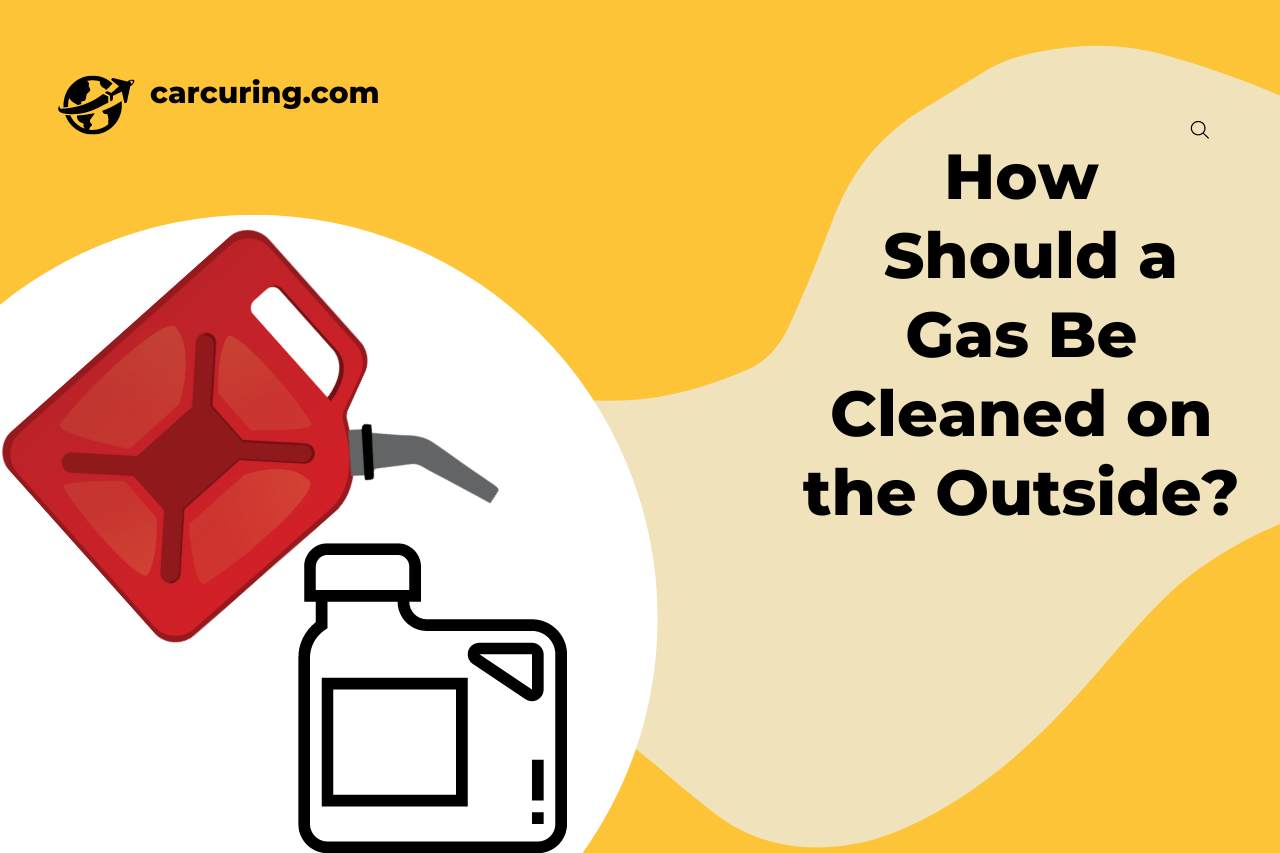Old gasoline cans may require cleaning to remove any dirt or other contaminants that might harm the gas composition of the can. It could also be necessary to clean a gas can if it contains oil. It’s as simple as 1-2-3 to comprehend “how to clean a gas can.”
Despite the fact that many houses have gas cans, maintaining them whenever gas is present can be challenging. It’s not difficult to clean your gas can, but you need to do it correctly. The safe and efficient cleaning of a gas tank will be covered in this piece.
When Should I Clean The Gasoline Cans?
You might be curious as to why I feel the need to wash the cans. Following all, they are designed to hold gas. Let’s talk about when and the reason why you should clean them.
If You Keep Gas within the Can
It can deteriorate regardless of where you store gasoline. Gasoline cans should generally be thrown out if they have been sitting around for longer than you can recall.
Whenever a gas begins to evaporate, certain chemical elements disappear first. This may result in delayed engine turnover, decreased power, motor damage, and increased fuel consumption. Long-term storage of gas cans causes them to develop condensation, corrosion, bacteria, and/or other problems.
Anytime You Notice Black Coatings
Cleaning is usually necessary if you observe black films on plastic gasoline cans. This is frequently collected gas-related muck or varnish.
Whenever you’re Uncertain about Its Contents
In this situation, it is better to be cautious than sorry. Taking that unknown substance to an unsafe waste petrol pump and cleaning up your gas container is the best line of action.
After Purchasing a Used Gasoline Can
It’s generally beneficial to clean a spent gas prior to using it’s new if it’s not certain that it was just used drinking gas. Your fresh gas might be contaminated by some old, built-up muck or varnish, which would be a concern. It’s advisable to inspect a gas can before buying it to ensure that it appears clean.
How to Clean a Gas Can?
Ensure that the gasoline can is totally empty before starting. Move the gas to a different container if necessary, or get rid of a tiny quantity of gas securely in accordance with the rules set out by your state for the elimination of dangerous materials.

How Should a Gas Be Cleaned on the Outside?
Place the gasoline can in a single sink bowl if you’re washing the container there; you may also do this outside with a hose. Apply some dish soap with a squeeze bottle on the brush before running water over it.
Start by cleaning the top of the gas container while working from there down to the bottom. To retain the suds while you work, periodically moisten the brush beneath the water supply and apply more detergent.
In order to remove any debris or filth from the bottom, tip the container back or sideways once you’ve reached the bottom.
Once you’re done, wash the can using a sprayer or underneath the faucet. The best solution for eliminating stubborn gas and grime residue is water that is either hot or warm. If any dirt is still there, pick it up with your toothbrush, administer the cleanser, scrape some more, and repeat the rinsing process.
What is the Best Way to Clean a Gas Canister Inside?
You might also want to cleanse the interior of an outdated petroleum can if it contains gasoline that is faulty, expired, and the incorrect type so that no pollutants end up in your car, lawnmower, or generators.
Once more, confirm that they can remain empty before removing the lid and/or spout. Add a little detergent into the gas container and then fill it to capacity with hot water until approximately a third of it is filled up.
Shaking the can ferociously to remove any deposits or debris from the interior, covering the outlet hole with either your palm or the cap.
After emptying the contents through the drain, refill the container with water once more to rinse away all that cleanser and any lingering particles. Repeat this several times till you see that there’s no more detergent.
Wipe the Can Entirely
When done, place the can somewhere dry with sufficient ventilation to allow it to dry out. When you load it with gasoline, you aren’t interested in even a few droplets of water being there. The combination of water as well as an adhesive like ethanol, referred to as “phase separation,” might be brought on by water in the container and harm an engine.
A Gas Can: How Do I Fill It?
Keep in mind that gas is flammable and simple to ignite while filling a gasoline can. Take all essential safety measures to keep people, cars, and fires out of the route of the gas can. Before filling, be sure all of which static energy has been released.
When you go to the petrol station, shut off the engine and put out any tobacco products or cigars you may have.
- Eliminate static energy after getting out of the automobile to avoid sparking.
- The gas that is can be taken out of the automobile and put on the floor. A secure distance from individuals and automobiles should be present.
- Align the fuel can’s edge with the gas pump’s tip before setting it up to start filling.
- Fill the gasoline can gradually, leaving a few inches at the highest point.
- After stuffed, screw the top on firmly.
- Before returning the gas can to the car, clean it off.
Suggestions for Cleaning Your Gasoline Container
Following these guidelines will help you maintain a gas tank clean, given that you understand how to maintain one.
On a regular basis, wash the gas canister. This will make it easier to avoid any mishaps.
When washing the gas box, use non-abrasive detergent. It will lessen the chance of the container being harmed.
After every usage, wipe the level of the gas bottle with a soft cloth. This will assist in keeping it clear of dirt and clean.
When never utilized, keep the gas can safely stored. This will make it easier to avoid any mishaps.
These recommendations will help you maintain your gas canister secure and clean. When interacting with and preserving any volatile substances, exercise extreme care.
Watch this one,
Video Credits – Mongo Fix

![[DIY Guide] Resetting the Low Washer Fluid Light and Saving Money](https://carcuring.com/wp-content/uploads/2023/03/how-to-reset-low-washer-fluid-light-270x162.jpg)
